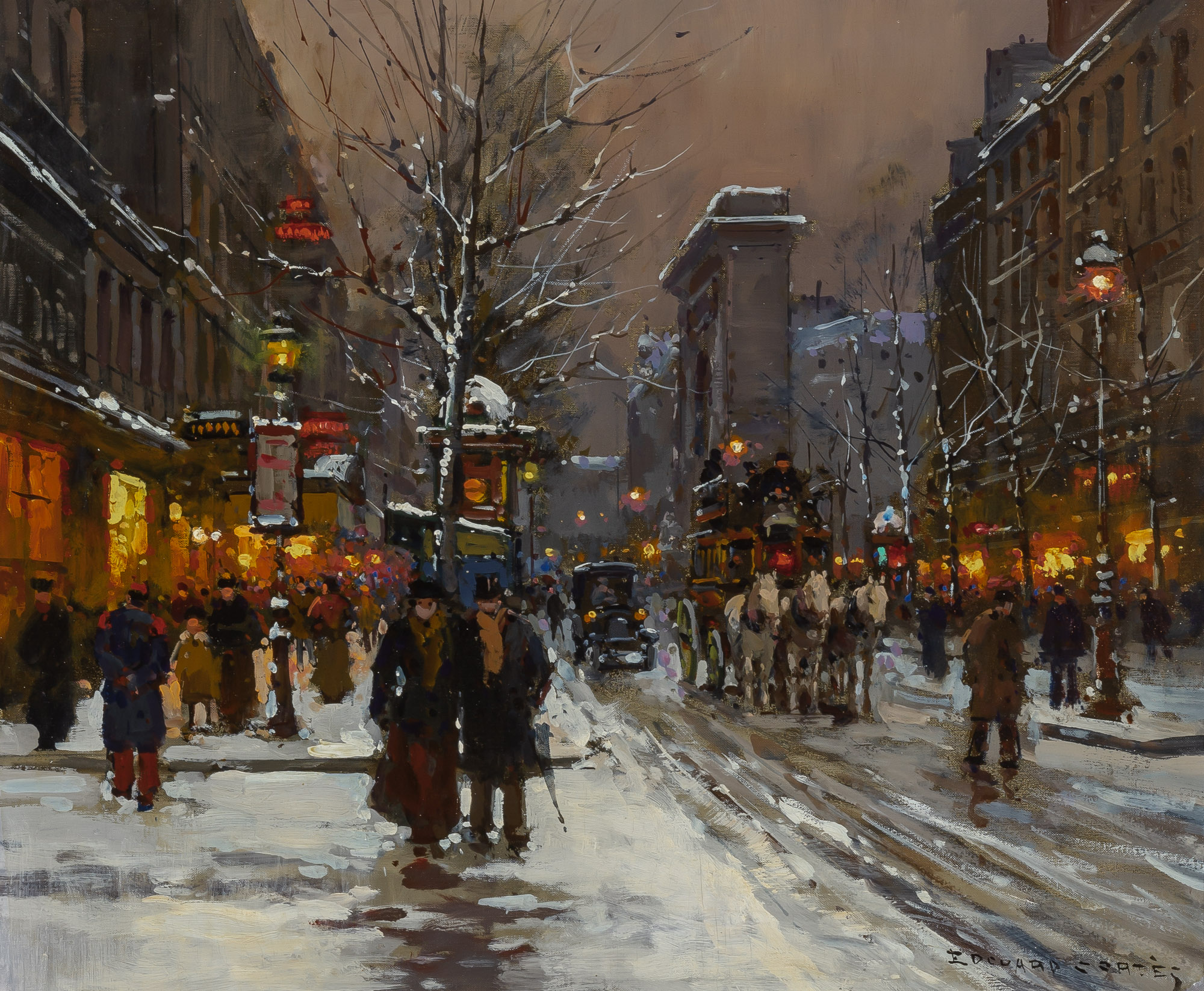
Edouard Léon Cortès
French, 1882-1969
Edouard Léon Cortès was a French painter celebrated for his luminous views of Paris. Born in Lagny to a Spanish painter at the royal court, Cortès was immersed in art from an early age. He made his debut at sixteen at the Société des Artistes Français, setting the stage for a career devoted to capturing the atmosphere of French life. Though influenced by the Barbizon school and plein-air traditions, his vision remained distinctly his own—anchored in observation and reverence for everyday beauty.
Best known for his evocative street scenes, Cortès painted Paris through every season—boulevards, cafés, rain-soaked pavements, and snow-lit evenings. Working in oil, gouache, watercolor, and pastel, he conveyed a city in motion yet paused in time. His compositions often feature twilight tones, reflective cobblestones, and the interplay of horse-drawn carriages and early automobiles. Beyond Paris, he also painted the landscapes of Normandy, interior still lifes, and rural vistas with equal sensitivity.
Cortès gained wide acclaim, particularly in North America following World War II, yet remained modest, devoted to his work above all else. He once said, “I was born from and for painting,” a sentiment reflected in the consistency of his work. For collectors, his paintings offer both aesthetic delight and historical depth, a timeless view into the spirit of Belle Époque and early 20th-century France.